Yan Can Cook – Spice Kingdom is a 13-part series that explores the many aspects of how food and spices helped shape the history and culture of Western China. The series takes a comprehensive look, spanning thousands of years, tracing the region’s early history through its water source at Dujiangyan.
Chinese scholars and historians name the region ‘Tian Fu’. It means the land of heavenly abundance. Rich farm land and temperate climate of this region gave rise to 23 centuries of uninterrupted history.
Our shows also examine the region’s close ties to the historic Three Kingdom Period, and how the connections are still revered and celebrated in today’s life. From museums to the dining table, we explore the daily life of those who innovate in high technology as well as those who labor the land. We share the quick and slow pace of their lives, from a whirlwind tour of street snacks to a leisure cup of tea at historical tea houses.
Thanks to the enthusiastic support of the local culinary community, we gained access to cooking academies and numerous top-rated restaurants, along with their award-winning chefs, who were eager to share their culinary creation with an international audience.
Our culinary journey included a look at the region’s future, through the eyes of children, and new urban development and economic expansion. Yan Can Cook – the Spice Kingdom delivers what its title suggests, thirteen shows that will spice up not only our viewers’ appetite but also their curiosity.
Episode List:
- Panda-monium!
Martin visits the adorable giant pandas at the Research compound in Chengdu and helps with the feeding. Fascinated by all the bamboo surrounding Martin attended a bamboo banquet at a bamboo-themed restaurant, where he learns how to harvest young bamboo. He follows the bamboo theme and visits with artists who use bamboo as an artistic medium.- Studio recipe: “Braised Chicken Wings” & “Bamboo Shoots ‘Guai Fei’ Chicken”
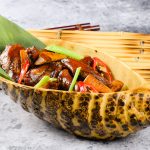
- 60-second recipe: “Bamboo Shoots with Fennel Dressing”
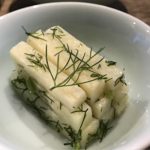
~
- Studio recipe: “Braised Chicken Wings” & “Bamboo Shoots ‘Guai Fei’ Chicken”
- Tomorrow’s Chengdu
Martin explores the new township of Tianfu, a model city in development that will be the model of future cities in China. As high tech industry is the main draw in Tianfu, Martin visits some of these new software developers, and a Mao Chai restaurant, the popular choice for lunch among many new tech workers. That evening Martin samples the molecular gastronomy of Chef Huang atop a Chengdu high rise. He rides off in one of the city’s popular ‘shared’ bikes.- Studio recipe: “Sous Vide Duck Confit with Tomato Salad”
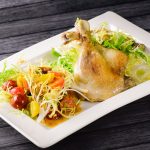
- 60-second recipe: “Tea-Flavored Eggs”
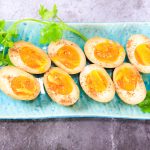
~
- Studio recipe: “Sous Vide Duck Confit with Tomato Salad”
- Hot Pot, anyone?
Hot pot is almost a religion in Chengdu. On this episode Martin explores several of Chengdu’s estimated 30,000 hot pot restaurants. He show cases them by their unique features and themes. He also goes into the street and asks the general public how they truly feel about hot pots.- Studio recipe: “Hot pot soup”
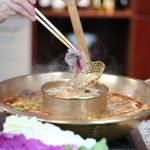
- 60-second recipe: “Mung Bean Jelly with Sichuan Spicy Sauce”
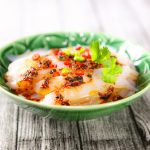
~
- Studio recipe: “Hot pot soup”
- Tea Time!
Outside of Chengdu, there are several well-known tea plantations. Martin explores the local tea cultivation process, samples different types of popular brews, attends a tea serving ceremony, and visits the oldest tea house in People’s Park in Chengdu. In the studio, Martin cooks up dishes that use tea as an ingredient or flavoring agent.- Studio recipe: “Tea Flavored Silky Egg Custard with Shrimp” and “Green Tea Yogurt with Kiwi Fruit Dessert”
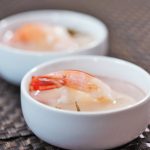
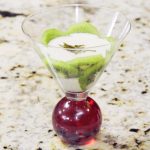
- 60-second recipe: “Green Tea Krumkake”

~
- Studio recipe: “Tea Flavored Silky Egg Custard with Shrimp” and “Green Tea Yogurt with Kiwi Fruit Dessert”
- The voice of the mountain
Sichuan is mountainous. Outside of Chengdu, many ethnic minorities reside up in the mountains for centuries. Mountain music is a popular instrument used to express local culture and record local history. Martin meets up with Mr. Zhang a famous mountain singer and learns about the life and cuisine of the mountains.- Studio recipe: “Ginko Nut Double-Boiled Chicken” and “Long Beans or Green Beans Pao Cai Stir-fried”
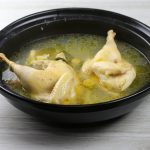
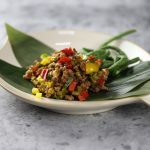
- 60-second recipe: Sichuan Pickled Vegitables “Pao Cai”
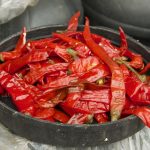
~
- Studio recipe: “Ginko Nut Double-Boiled Chicken” and “Long Beans or Green Beans Pao Cai Stir-fried”
- That which sustains life
The origin of Chengdu can be credited to Dujiangyan, a set of levies that diverted the Min River over 2,000 years ago. Martin visits this UNESCO historical site and saw first hand how the water had created the fertile farmland which eventually gave rise to the city of Chengdu. He enjoys the abundance of fruits and vegetables by visiting local farms and orchards.- Studio recipe: “Water Cooked Fish”
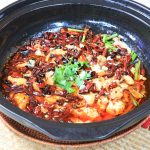
- 60-second recipe: “Chen Mapo Tofu”
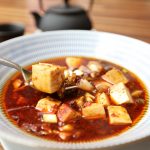
~
- Studio recipe: “Water Cooked Fish”
- Poetry in a cup
Wine making or baijiu making in China goes back thousands of years. Martin visits a famous Chengdu distillery for a close up look on how Chinese baijiu is produced. He narrates famous Chinese legends connected to the culture of wine. For a more contemporary look he attends a typical Chinese banquet and shows the popular Chinese drinking games and toasting.- Studio recipe: “Li Bai Drunken Chicken” and “Steamed Kabocha with Rice Lees”
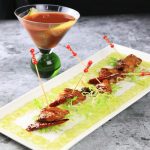
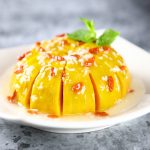
- 60-second recipe: none
~
- Studio recipe: “Li Bai Drunken Chicken” and “Steamed Kabocha with Rice Lees”
- Hot, hot and extra hot!
If there is only one word to describe Sichuan cuisine, that word is HOT. Martin dives into the world of chili peppers and chili bean paste by visiting the world’s largest bean paste factory and the world’s biggest chili market. He puts the chili peppers to good use at a chili banquet and later explores the hottest restaurant in Chengdu for a midnight snack.- Studio recipe: “Spicy Crispy Beef with Rice Crackers”
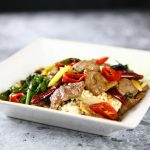
- 60-second recipe: “Yan Style Fragrant Red Spicy Oil”
~
- Studio recipe: “Spicy Crispy Beef with Rice Crackers”
- “Small Bites”
In Chengdu, a snack is called a small bite, or ‘xiao chi’. But a ‘xiao chi’ is really a lot more than just a simple snack. It can be an appetizer, a street food, but it can also be a cleansing of the palate between courses, or when you assemble many on them on a table, they can make a fabulous banquet. On this show Martin takes small bites but tells a big story.- Studio recipe: “Cold Noodles with Spicy Meat Sauce”
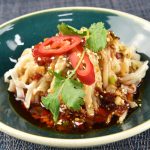
- 60-second recipe: “Grilled Quail Eggs”

~
- Studio recipe: “Cold Noodles with Spicy Meat Sauce”
- Rising Stars
There are 230 million children under the age of 15 in China. On this show Martin meets up with many talented ones from Chengdu. They are future opera divas, poets, pop singers, sculptors and of course, chefs! Chengdu, the next generation, is front and center on this episode.- Studio recipe: “Panda Sushi” and “Fresh Fruit Rice Roll”
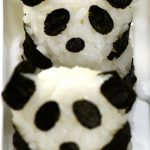
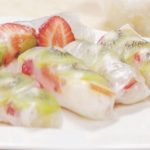
- 60-second recipe: “Fresh Fruit Popsicles”

~
- Studio recipe: “Panda Sushi” and “Fresh Fruit Rice Roll”
- Fine Art, Fine Food
The art scene is thriving in Chengdu. Martin tours an artist community and sees first hand how local artists create ceramics and file paintings. To add his personal touch he added an encrusted chicken in the community kiln. For a taste of true culinary art he visits the home restaurant of Chef Lan, lauded as the best chef of Chengdu.- Studio recipe: “Pork Slices with Garlic Sauce”
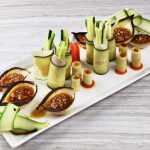
- 60-second recipe: “Fresh Fruits Garden with Carrot Dirt”

~
- Studio recipe: “Pork Slices with Garlic Sauce”
- Back to Roots
Many small family farms around Chengdu have turned into chic Bed and Breakfast places. They are popular with many of Chengdu’s residents who can trace their roots back to the country. Martin joins a farming family for dinner at their house. He rolls up his sleeves and learns about authentic farmers cooking.- Studio recipe: “Eggplants with 3 sauces”
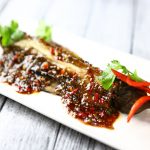
- 60-second recipe: “Duck Egg Surprise”
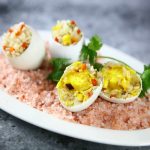
~
- Studio recipe: “Eggplants with 3 sauces”
- One belt, one road, one world
The New Silk Road Railway connects Chengdu to Western Europe by highspeed train. This is the 21st century version of the historical silk road, which opened China to the west and vice versa a thousand years ago. Martin samples some of the new food imports from Spain and Denmark, and marvels at the tremendous scale of China’s industrial projects.- Studio recipe: “Sous Vide Salmon with Ma La Ponzu Sauce”
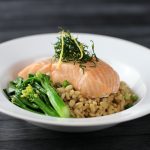
- 60-second recipe: none
~
- Studio recipe: “Sous Vide Salmon with Ma La Ponzu Sauce”

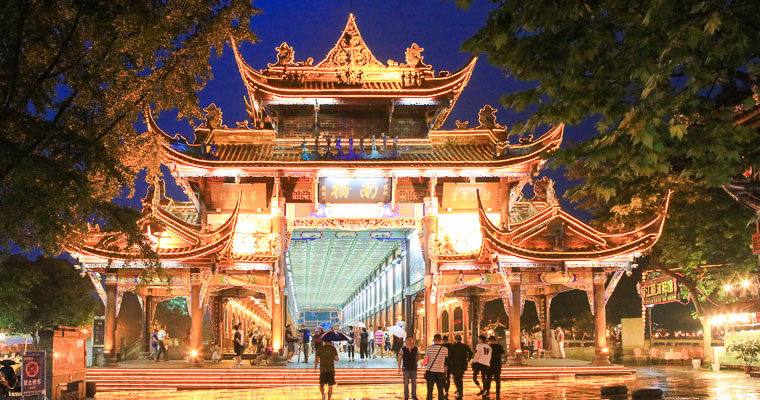
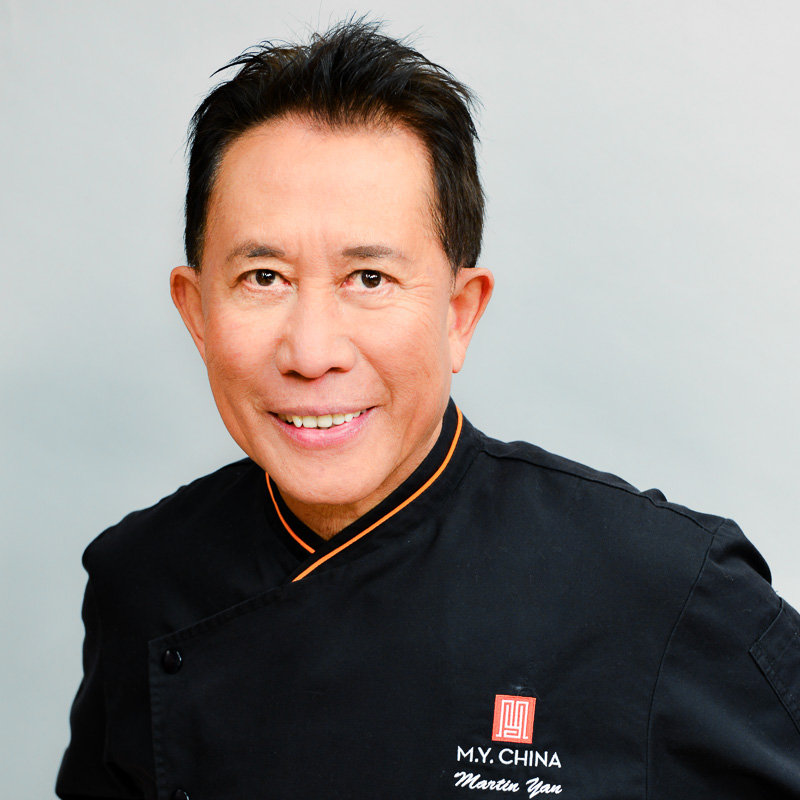 Chef Yan has remained an active international food ambassador throughout his career. He roams the world representing different commercial and social concerns to entertain and educate the public, sharing with them his unique humor and strong passion for Chinese cooking.
Chef Yan has remained an active international food ambassador throughout his career. He roams the world representing different commercial and social concerns to entertain and educate the public, sharing with them his unique humor and strong passion for Chinese cooking.